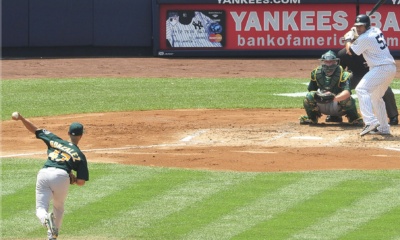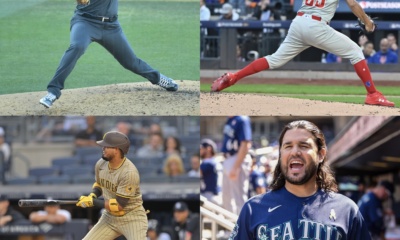
With His Prodigious Hitting Power, He Hit 868 Home Runs in 22 Years
University Students Organized Baseball in Japan in 1872
Coral Gables, Florida (VIP WIRE) – The Japanese adore and admire Shohei Ohtani, but not as much as Sadaharu Oh, who hit 868 home runs in the top league in that part of the world, in a 22-year career, from 1959 to 1980.
That’s more home runs than Barry Bonds (762), Hank Aaron (755), and Babe Ruth (714).

Sadaharu Oh during an interview with Juan Vené in Japan in 1972, when Sadaharu was still actively playing for the Giants.
During one of my visits to Japan, in 1972, I interviewed Oh, the left-handed hitter active at the time, and asked him to talk about his power.
“That doesn’t depend on you. It’s natural. When I started playing, I didn’t know I had the power I later demonstrated. No training produces power. It’s something you’re born with.”
The Beginning
Baseball arrived in Japan in 1872, brought by American university professor Horace Wilson, who was hired to modernize the system at Keiko Gakko University.
He was very enthusiastic about baseball, like most young people in the eastern United States at that time. It was the second year of the first major league, the National Association, and four years later, the National League was founded.
Wilson brought three bats and six balls (gloves didn’t exist yet) with which he taught the game to several students, and it soon became popular throughout Japan under the name yakyu.
A sporting goods store in New York received an order from Japan 17 years later, on March 20, 1889: “Please send me six bats, a dozen balls, seven gloves (they existed then) for playing baseball, a mitt, and catcher’s gear. I enclose the corresponding check, for the price you sent me.”
The message was signed by Hiroshi Hiraoka, an engineer from Tokyo who had studied in New York. In it, he stated that they were already practicing and organizing “an association” (a league).
Now, the Japanese Major Leagues play with 12 teams, as follows:
CENTRAL LEAGUE
Chunichi Dragons
Hanshin Tigers
Hiroshima Toyo Carp
Tokyo Yakult Swallows
Yokohama DeNA BayStars
Yomiuri Giants
PACIFIC LEAGUE
Chiba Lotte Marines
Fukuoka SoftBank Hawks
Hokkaido Nippon-Ham Fighters
Orix Buffaloes
Saitama Seibu Lions
Tohoku Rakuten Golden Eagles
The season begins in late March or early April and ends in October, with 146 games per team, 73 at home and 73 away. The championships conclude with the champions of each league competing in the Nippon Series, a best-of-seven series.
There are two minor leagues, the Eastern League and the Western League.
In Major League Baseball

The Japanese slugger Sadaharu Oh (right), with Juan Vené in 1972. University students organized baseball in Japan in 1872.
The first Japanese player in the Majors was the 20-year-old left-handed pitcher Masanori Murakami, who, in two seasons (1964 and 1965) with the San Francisco Giants, posted a 5-1 record, a 3.43 ERA, nine saves, and 100 strikeouts in 89.1 innings.
Very good numbers. But Japanese baseball executives, fearing that their best players would be poached by the Major Leagues, banned all Japanese players from playing in Japan. Murakami had to stay with the Nankai Hawks, a team in Japan at the time.
And 31 years passed without Japanese players in the Major Leagues, until Hideo Nomo, a 26-year-old right-handed pitcher, and his agents, Don Nomura and Arm Telem, managed to end the ban. Nomo pitched for six teams, compiling a record of 123-108 with a 4.24 ERA.
Most Japanese players have demonstrated top-level skill in the game; one is even in the Baseball Hall of Fame in Cooperstown: Ichiro Suzuki. Other notable players include Hideki Matsui, Yu Darvish, Kenta Maeda, Hiroki Kuroda, Tomoyuki Sugano, Masataka Yoshida, and more recently, Yoshinobu Yamamoto and Shohei Ohtani.
Impressive Presence
All Japanese big leaguers have been models of impressive on-field presence. They seem to be teaching a few Americans and many Latin Americans that pants should reach just below the knees, that the face should be completely shaved before each game, that hair should be cut in a masculine style, without ridiculous long locks or braids like marriageable girls, and that one must be chivalrous at all times.
Thanks to life for giving me so much, including a reader like you.
ATTENTION: You can read the recent archive of Juan Vené en la Pelota in Spanish, on the Internet, by accessing it with: El deporte vuelve a unirnos.
@juanvene5
(En Español)
Sadaharu Oh, Una Leyenda del Beisbol Japonés
Estudiantes Universitarios Organizaron el Beisbol en Japón en 1872
Coral Gables, Florida (VIP WIRE) – Los japoneses adoran y admiran a Shohei Ohtani, pero no tanto como a Sadaharu Oh, quien disparó 868 jonrones en el máximo beisbol de aquella parte del mundo, en una carrera de 22 años, 1959 a 1980.

El slugger y leyenda japonés Sadaharu Oh, quien disparó 868 jonrones en 22 temporadas, es entrevistado por Juan Vené en 1972.
Fueron más cuadrangulares que Barry Bonds 762, más que Hank Aaron 755, más que Babe Ruth 714.
Durante una de mis visitas a Japón, la de 1972, le hice una entrevista a Oh, bateador zurdo, activo entonces, y le pedí me hablara de su poder.
“Eso no depende de uno. Es natural. Cuando comencé a jugar no sabía que tuviera la fuerza que después demostré. Ningún entrenamiento produce poder. Es algo que nace con la persona”.
El Comienzo
El beisbol llegó a Japón en 1872, de la mano del profesor universitario estadounidense Horace Wilson, a quien contrataron para modernizar el sistema de la Universidad Keiko Gakko.
Estaba él muy entusiasmado con el beisbol, como la mayoría de los jóvenes de esa época en el este de Estados Unidos. Era el segundo año de la primera Liga Grande, la National Association y cuatro años después, fue fundada la Liga Nacional.
Wilson llevó tres bates y seis pelotas (no existían los guantes) con los cuales enseñó el juego a varios estudiantes, y pronto se popularizó en todo Japón, bajo el nombre de yakyu.
Una tienda de deportes de Nueva York, recibió una orden desde Japón, 17 años después, el 20 de Marzo de 1889: “Por favor, envíenme seis bates, una docena de pelotas siete guantes (ya existían) para jugar beisbol, un mascotín y los aperos para catcher. Adjunto el cheque correspondiente, según precio que me mandaron”.
Firmaba Hiroshi Hiraoka, de Tokio, ingeniero, quien había estudiado en Nueva York. En su mensaje decía que ya estaban practicando y que organizaban “una asociación” (una Liga).
Ahora, las Grandes Ligas japonesas juegan con 12 equipos, así:
Liga Central
Chunichi Dragons
Hanshin Tigers
Hiroshima Toyo Carp
Tokyo Yakult Swallows
Yokohama DeNa BayStars
Yomiuri Giants
Liga del Pacífico
Chiba Lotte Marines
Fukuoka SoftBank Hawks
Hokkaido Nippon-Ham Fighters
Orix Buffaloes
Saitama Seibu Lions
Tohoku Rakuten Golden Eagl.
La temporada comienza a fines de marzo o principios de abril y termina en octubre, con 146 juegos por equipo, 73 en casa y 73 de visitantes. Finalizan con los campeones de cada Liga en la Serie Nippon, a ganar cuatro de siete juegos.
Hay dos ligas menores, la Eastern League y la Western League.
En Grandes Ligas
El primer pelotero japonés en las Mayores, fue el lanzador zurdo, Masanori Murakami, de 20 años, quien en dos temporadas, 1964 y 1965, con los Gigantes de San Francisco, dejó récord de 5-1, 3.43 y nueve salvados, más 100 strikeouts en 89.1 innings.
Muy buenos números. Pero los ejecutivos del beisbol japonés, temerosos de que en Grandes Ligas les quitaran sus mejores peloteros, prohibieron a todos jugar aquí. Murakami tuvo que quedarse con los Nankai Hawks, equipo de aquella época en Japón.

El toletero Sadaharu Oh (der.) junto a Juan Vené en 1972. Sadaharu conectó 868 jonrones en 22 temporadas.
Y transcurrieron 31 años sin japoneses en las Mayores, hasta que Hideo Nomo, lanzador derecho de 26 años, y sus agentes, Don Nomura y Arm Telem, lograron terminar con la prohibición. Nomo lanzó para seis equipos, dejó récord de 123-108, 4.24.
La mayoría los nativos de Japón han demostrado máxima calidad en el juego, incluso, ya hay uno en el Hall de la Fama de Cooperstown, Ichiro Suzuki. Otros notables han sido, Hideki Matsui, Yu Darvish, Kenta Maeda, Hiroki Kuroda, Tomoyuki Sugano, Masataka Yoshida, hasta Yoshinobu Yamamoto y Shohei Ohtani en nuestros días.
Buena Presencia
Todos los big leaguers nipones, han sido modelos de buena presentación en el terreno. Parecen enseñar a unos cuantos estadounidenses y a muchos latinoamericanos, que el pantalón debe llegar hasta poco más abajo de las rodillas, que la cara debe ser rasurada totalmente antes de cada juego, que el cabello debe ser cortado a lo masculino, sin ridículas melenas, ni clinejitas como las niñas casaderas, y que se debe ser caballeroso todo el tiempo.
Gracias a la vida que me ha dado tanto, incluso un lector como tú.
ATENCIÓN: Puedes leer el archivo reciente de Juan Vené en la Pelota, en la Internet, si accedes con: El deporte vuelve a unirnos.
@juanvene5






















